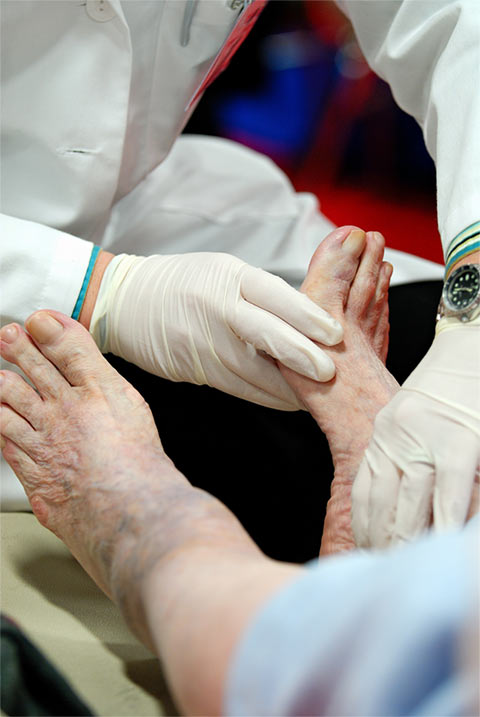Diabetes facts.

Approximately 1.5 million Canadians suffer from diabetes. There are several well-known problems associated with diabetes, but foot ulcers are of very high concern. This is because nerve damage resulting from diabetes can lead to poor blood flow, a higher risk of skin infections and delayed wound healing. Minor scratches can sometimes be devastating for people with diabetes, leading to ulcers that could often necessitate amputation. The bad news is that statistics show that almost 6000 people with diabetes who develop foot ulcers will undergo amputation. The good news is that at least 85% of diabetes-related foot amputations can be prevented by prompt and proper foot care.
What you should do?
Please be sure to follow foot care recommendations carefully, and please bring even minor unhealed foot irritations to the attention of your family physician or podiatrist without delay. The faster treatment is started, the better the chances are that your feet will last a lifetime!
Foot Care Recommendations
Check your feet every day:
- Look at the tops and bottoms. If you can’t see the bottom, use a mirror or ask a friend / parent to help you.
- Look for scratches, cracks, cuts, blisters, etc., especially between the toes and around the heels.
- Check for ingrown nails, corns, calluses and sores. Note any changes in colour, temperature or shape.
Wash your feet every day with mild soap and lukewarm water:
- Test the temperature of bath water first with your elbow to make sure it is not too hot.
- Do not soak your feet. Soaking can cause your skin to become dry and crack.
- Dry your feet gently, especially between the toes.
- Keep your skin from cracking by using a moisturizing lotion daily.
Take care of your toe nails:
- See a podiatrist regularly for necessary trimming and / or other appropriate care.
Protect your feet:
- Do not walk barefoot, even indoors.
- Break in new shoes slowly. Wear new shoes for only 1 or 2 hours at a time.
- Always wear clean socks with your shoes. They should not be too tight around the foot or ankle and should have smooth seams. Cotton or other natural materials are best.
Keep your blood flowing well:
- If you smoke, try to quit. Smoking decreases blood flow to the feet.
- Keep your feet warm, but do not use heating pads or hot water bottles on them.
- Avoid wearing tight garters or stockings.